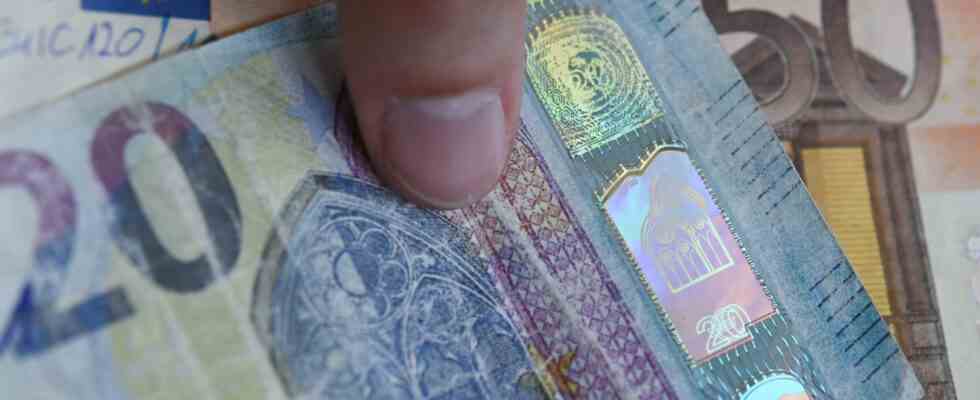Status: 01/30/2023 3:00 p.m
In the past year more counterfeit money has been withdrawn from circulation. Criminals increasingly tried to scam traders at festivals or Christmas markets with counterfeit banknotes.
The expiration of most of the corona restrictions in the past year has increased the number of counterfeiters in Germany and Europe. In Germany, the police, retailers and banks withdrew almost 44,150 counterfeit euro banknotes from payment transactions in 2022, as the Bundesbank announced today. That was 5.2 percent more than in the previous year.
“This is probably due to the fact that the corona restrictions of the two previous years were largely lifted and folk festivals or Christmas markets took place again, where most of the payments were made in cash,” said Bundesbank board member Burkhard Balz. Overall, however, the volume of counterfeit money remains low: In purely mathematical terms, there were five counterfeit banknotes per 10,000 inhabitants in 2022. For comparison: In 2015, the Bundesbank registered 95,400 counterfeit euro notes in Germany – in that year the number reached its highest level since the introduction of euro cash in 2002.
Mostly counterfeit 20 and 50 euro bills
The calculated damage caused by counterfeit money increased significantly year-on-year from 1.9 million euros in 2021 to 2.7 million euros. According to the Bundesbank, this was mainly due to the fact that in several cases watches and cars were paid for with counterfeit 100 and 200 euro banknotes. The 20 and 50 euro notes, which together make up 69 percent of the counterfeit money discovered in Germany, are particularly popular with criminals.
| Grades | number | Percentage (rounded) |
|---|---|---|
€5 | 807 | 2% |
€10 | 3959 | 9% |
€20 | 12,514 | 28% |
€50 | 18,083 | 41% |
€100 | 5397 | 12% |
€200 | 2396 | 5% |
€500 | 989 | 2% |
Also in Europe as a whole, 20 and 50 euro notes make up almost two thirds of the 376,000 counterfeit euro notes that have been withdrawn from circulation. The number of euro blossoms increased by 8.4 percent compared to the previous year. The damage volume across Europe rose from 17.5 million to 21.5 million euros.
Less “film money” confiscated
For some time now, criminals have been relying on easily recognizable printed forgeries that are offered on the Internet as play money or film props labeled “Movie Money” or “Prop copy”. The proportion of such notes in confiscated flowers in Germany has now fallen from 22 percent to 17 percent, it said. “The issue has now reached the retail trade, but at the same time the pressure from the law enforcement authorities is increasing. Placing Movie Money on the market can be a criminal offense,” says Balz.
Also number of counterfeit coins higher
Because charitable organizations collected suspicious coins for logistical reasons during the pandemic years and only handed them over to the Bundesbank with a delay, the number of counterfeit coins in Germany rose sharply: the Bundesbank counted almost 73,400 counterfeit euro coins, compared to 41,100 a year earlier. As with bills, the probability of getting a counterfeit coin is comparatively low. Arithmetically, there were nine counterfeit coins per 10,000 inhabitants in Germany.
| coins | number | Percentage (rounded) |
|---|---|---|
€0.50 | 465 | 1 % |
€1 | 5109 | 7% |
€2 | 67,810 | 92% |
The Bundesbank points out that you should notify the police immediately if you have received counterfeit money. Because if you pass on or return counterfeit money, you could be liable to prosecution, just like if you made counterfeit money. There is no substitute for counterfeit money. Therefore, retailers should not release any goods before paying with valid money.

